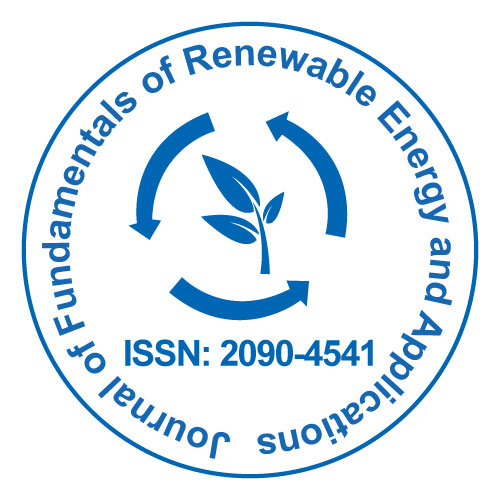
Tagebuch des fondamentaux de l'énergie renouvelable et des applications
Libre accès
ISSN: 2090-4541

ISSN: 2090-4541
MKh Rumi, MA Zufarov, EP Mansurovа et NA Kulagina
Français Les résultats de la cristallisation des verres de composition cordiérite, synthétisés sous l'influence d'un flux radiant concentré de différentes densités, sont présentés. La synthèse a été réalisée à l'aide d'un four solaire ou d'un simulateur solaire, dans lequel des lampes au xénon de 10 kW de puissance servent de source de chaleur. Nous avons étudié les verres de composition stoechiométrique suivante 2MgO: 2Al2O3: 5SiO2 sans catalyseur et avec TiO2 comme catalyseur. Les matières premières initiales étaient MgO, Al2O3 et la roche quartz-kaolinite-pyrophyllite comme source principale de SiO2. Les natures des transitions de phase dans les échantillons obtenus sont étudiées à l'aide de l'analyse des rayons X (DRON-UM-1) et de la méthode thermique différentielle (Dérivatograph Q-1500 D). Les spectres d'absorption sont obtenus sur le spectrophotomètre SF-56. Français Une comparaison de la composition des phases des échantillons cristallisés montre que la cristallisation de la μ-cordiérite et la transition de la μ-cordiérite à l'α-cordiérite dans les verres, synthétisés à l'aide d'une lampe au xénon, se produisent à des températures plus basses que celles synthétisées à l'aide du rayonnement solaire, à condition que les mêmes conditions de synthèse et de recuit soient respectées. En outre, dans les verres contenant du TiO2, la teneur en Ti3+ augmente et une dégradation de la phase concomitante, le magnésium-aluminium-titanate, est activée à des températures de recuit supérieures à 1200°C. Les différences dans le caractère de la formation de phase affectent l'activité des poudres de verre au frittage.
Il a été constaté que les particularités de la composition spectrale d'une lampe au xénon et du soleil affectent la nature du processus de cristallisation du verre. La présence d'une proportion significative de rayonnement ultraviolet extrême déclenche le processus de cristallisation par le mécanisme de photo-activation et a le même effet qu'une augmentation de la température de cristallisation du verre ou une augmentation de la concentration du catalyseur.